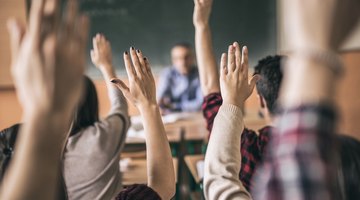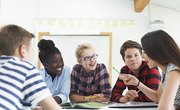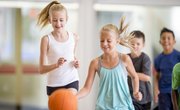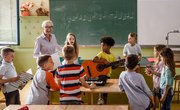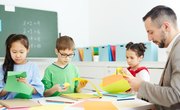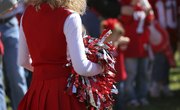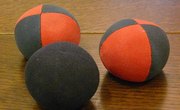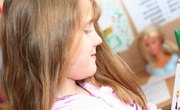After-school programs should provide activities that are fun and that capture the interest of students. Since they will be tired at the end of their school day, kids will need activities that are compelling but not too strenuous. Make sure to incorporate hands-on activities with your lesson plans to keep the students involved. Some after-school lesson plans can include engaging in physical activities or with technology, working with art supplies, or using measurement tools for cooking.
Hula-Hoop Exercise and Disc Golf
This exercise teaches preteens and young teens (8 to 14 years old) how to work with a partner to accomplish a goal. The first portion of the exercise will test how accurately one person can throw a disc to his partner who is standing in the hula hoop. The object of the game is to have the thrower stand behind a line while throwing the disc to the catcher who is 20 paces away and standing inside of the hula hoop. The catcher must have one foot in the hula hoop when the disc is caught in order for the catch to count. If the disc is caught, the catcher has to throw it back to the thrower and then immediately run to the second hoop, which is now 40 paces away from the thrower's line. For each disc caught, the thrower must add another 20 paces away from the hula hoop behind the line.
Disc golf is another activity that involves partners, a hula hoop and a disc. To begin, ask a student to throw the hula hoop to an open area as far as he can for his first disc golf hole. Players take turns throwing the disc into the hula hoop with their partner. Once the disc makes it completely into the hula hoop, the student will throw the hula hoop again from the current position for his second hole. This exercise teaches students golf terminology: hole in one, eagle, birdie, par, bogey and double bogey.
Digital Storytelling
This lesson will teach students how to write stories that include their own drawings, photos, animation, audio and video. Digital storytelling will help students improve their communication and writing skills and strengthen their technology skills. After a group brainstorming session, provide students with paper with pre-drawn boxes, and give them sticky notes. Each student will create a story board by determining which portion of her story goes in each box. The student will also determine if her story needs visual or auditory elements as she moves from frame to frame. Once the student is satisfied with the plot and action of the characters, she can move to a computer to compose a digital storybook. Direct the student to assemble each frame of her story in a PowerPoint slide, by adding text, pictures, voice recording and music.
3-D Self Sculpture
Begin by having students answer the question “Who am I” in a journal. They may use words, pictures, symbols and colors. Next, pair up students and ask them to work together to list what makes each of them unique. When they are done, have them make self-hardening clay by mixing 4 cups of flour and 1 cup of salt. Ask them to add 1 cup of water into the mixture very slowly. They will then mold the mixture together until it no longer falls apart. Each student should have one cup of clay for his project. Students will then work with clay to produce a self-portrait of themselves based on what they wrote down in their journal and what their partners shared.
Cooking Measurements
This lesson plan will teach students which measuring tools to use when they are cooking. To begin the exercise, form groups of four or five students, each with a set of measuring cups. Direct students to pour orange juice into the 1/2-cup measure and more orange juice into 1-cup measure. Now direct them to pour the orange juice into two different clear cups to see the difference in the two measures. Have students add a scoop of sherbert to both cups of orange juice to see which volume increases the most. Another volume exercise is to have students predict how many marshmallows can fit into a half cup. After the prediction is made, ask students to pour marshmallows into the 1/2 cup to see how many fill it. These exercises will help the students understand the concept of volume.
Related Articles
References
Writer Bio
Meghan McCoy began her journalism career in 2007, covering topics such as education, fitness entertainment and the arts. Her articles have appeared in "The Scottsdale Times," "The Apache Junction News," "The Cape Coral Daily Breeze" and "Charlotte Woman." McCoy received a Bachelor of Interdisciplinary Studies in mass Communication and sociology from Arizona State University.

